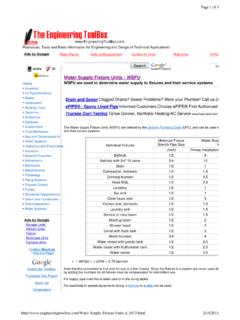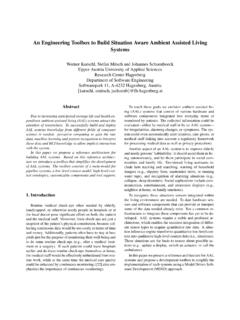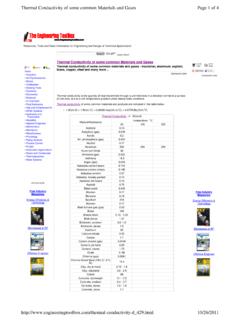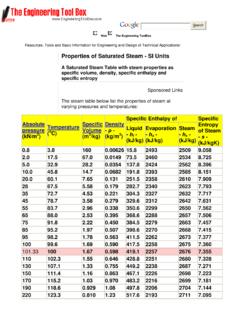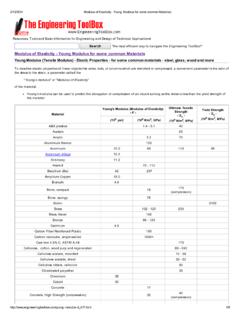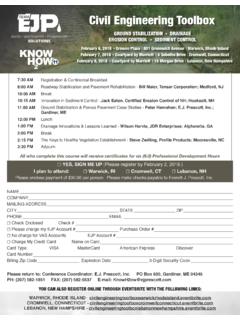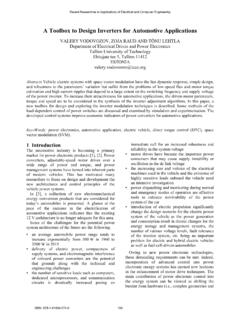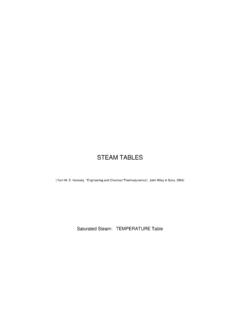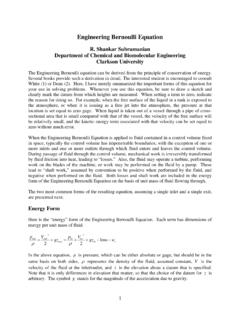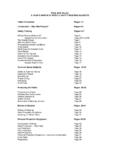Transcription of Inlet Engineering Toolbox - United States Army
1 Coastal Inlets Research Program Inlet Engineering Toolbox Description Issue Addressed Products The Inlet Engineering Toolbox (IET) Work Unit develops desktop PC and web-based tools to aid in studies of the consequences of Engineering actions at coastal inlets and adjacent beaches. District scientists and engineers need rapid-assessment tools to make decisions and visualize regional sediment transport and coastal process information over regional spatial scales.
2 IET tools and models were developed for desktop PC and web-based use, so that District scientists and engineers can rapidly compare alternatives for sediment management and make final design decisions rather than requiring a technical expert to do the work on a high-speed computer. The primary product of the IET Work Unit is GenCade, a one-line shoreline change and sand transport model. GenCade is run in the Surface-water Modeling System (SMS) version or higher. Another product is the Sediment Budget Analysis System (SBAS) which was developed for PC use and has been expanded to ArcGIS by the Regional Sediment Management (RSM) Program.
3 An improved version of the SBAS was recently developed. GenCade s longshore transport and shoreline change outputs can be used to develop a sediment budget, and an automated method to port GenCade results into SBAS was completed in FY15. Other activities ongoing in the work unit include methods to assess the resiliency of coastal dune systems, whether natural Figure 1. Top: GenCade setup at Onslow Bay, NC. Bottom: Shoreline change as a function of distance along the baseline; red=calculated, blue=measured.
4 Figure 2. Sediment budget in SBAS, Galveston, TX. Army Engineer Research and 30 Oct 2015 Development Center Application of Products Projected Benefits Documentation Points of Contact CIRP Website or built systems, and an improved longshore sediment transport formula. In response to a recent Statement of Need from USACE Districts, a Breaching Rapid Assessment Tool will be developed beginning in FY16.
5 An analytical breaching model was created in 2003 as a tool to quickly estimate the evolution of a breach width and depth. The new tool will be further developed to improve the widening and closing mechanism of a breach. In FY17 and FY18, a graphical-user interface and documentation will be produced. Also in FY16, sediment transport algorithms to predict the effects of boat wake induced sediment resuspension and transport in the context of channel Engineering applications will be developed. Tools previously developed under the IET Work Unit include the Shoaling Toolbox , the Inlet Reservoir Model, and the Sediment Budget Calculator.
6 GenCade has been applied to Onslow Bay, North Carolina; St. Augustine, Florida; Long Island, New York; and several locations along the Texas coast. Recent SBAS applications include Galveston Island, Texas; the Lake Erie shoreline; and Saco Bay, Maine. Tools developed by the IET Work Unit aid District personnel in the understanding of inlets and adjacent beaches, and streamline analyses. The primary forms of GenCade documentation are through multiple technical reports which include model theory, applications, and a user s guide and the CIRP Wiki.
7 Archived webinars and videos are available for users interested in following a sample GenCade simulation. Short video clips are available which describe each step in the process to set up the GenCade model. A user s guide for SBAS is available on the CIRP and RSM websites. Ashley E. Frey, (GenCade) Dr. Kate Brodie, (Dunes) Dr. Richard Styles, (Boat wake induced channel erosion) Dr. Ernie Smith, (Longshore sediment transport equation) Please see the CIRP website to download documentation: or View archived webinars: or Review guidance documented on the CIRP wiki.
